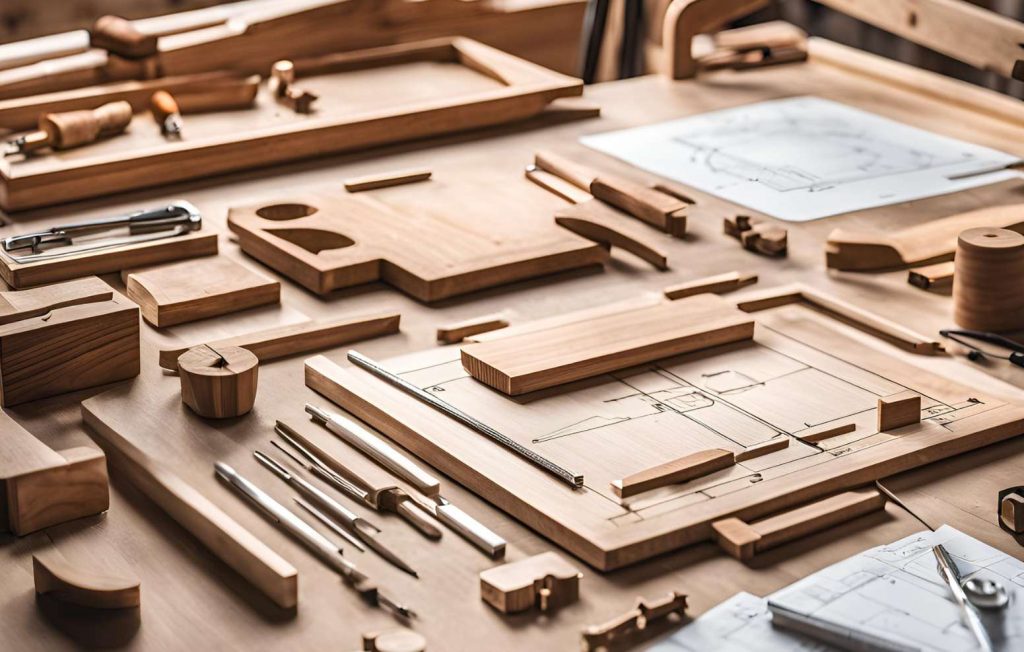The Importance of Millwork Drawings in Construction Projects: A Detailed Guide
Understanding the Unique Role of Millwork Drawings in Construction
Millwork drawings hold a pivotal role in the construction industry, particularly in high-end residential and commercial projects. If you’ve ever wondered how millwork drawings differ from other construction document sets, this article is for you. We’ll walk you through what makes them unique and why these detailed drawings are so important to successful projects.

What Are Millwork Drawings?
Millwork refers to any interior building components that are manufactured at a mill. This includes items like cabinetry, trim, moulding, doors, shelving, and other woodwork products. Millwork drawings are highly detailed, often containing precise specifications for custom wood products used in building interiors.
These drawings cover the fabrication, assembly, and installation processes and provide a visual and technical guide for carpenters, fabricators, and installers. Millwork drawings include information such as materials, finishes, hardware, and any other components needed to create the finished product.
Millwork vs. General Construction Drawings
Unlike general construction drawings, which outline the structural and mechanical aspects of a building, millwork drawings are focused on interior details. While construction drawings provide the overall framework, millwork drawings zoom in on custom-crafted elements that enhance the aesthetic and functionality of the interiors.
For instance, millwork drawings might specify the exact type of wood, the grain pattern, and the type of finish to be applied, along with dimensions that are much more specific than what you’d find in general construction documents. The level of precision required ensures that the final product aligns with the designer’s vision and fits seamlessly into the built environment.

Key Elements of Millwork Drawings
- Detailed Dimensions:
One of the hallmarks of millwork drawings is their precise dimensions. These drawings provide exact measurements, often down to fractions of an inch, to ensure that every piece of millwork fits perfectly within the designated space. - Materials and Finishes:
Millwork is not just about aesthetics; it’s also about materiality. Millwork drawings include detailed notes on the materials to be used, whether it’s specific wood types like oak or maple or composite materials for more contemporary designs. They also include finish instructions—ffor example, stain color, lacquer type, or paint finish. - Hardware Specifications:
From door handles to drawer slides, millwork drawings specify every piece of hardware that will be part of the installation. This attention to detail ensures consistency in design and functionality across all parts of the project. - Customization Details:
Many elements of millwork are custom-made, which means millwork drawings will often show unique features like carvings, inlays, or special moulding profiles. These custom features are what make millwork distinct from mass-produced items and require the extra level of documentation provided by millwork drawings.
The Importance of Accuracy in Millwork Drawings
Accuracy is non-negotiable when it comes to millwork. Because these components are often custom-fabricated, there is little room for error. A mistake in the drawing could lead to delays, increased costs, and dissatisfaction from the client. This is why millwork drawings are typically reviewed multiple times by architects, designers, and fabricators before going into production.
If you’re working on a project that requires millwork, ensuring that the drawings are thorough and exact is crucial. This is where specialized services like those provided by ADDMORE Services come into play. With years of experience in the AEC industry, ADDMORE offers top-notch millwork drawing and design services, ensuring your projects run smoothly from concept to installation.

Conclusion: The Role of Millwork in Bringing Designs to Life
Millwork is where function meets art. It’s the fine details that elevate a space, making it feel polished and complete. By understanding the critical role of millwork drawings and the high level of detail they require, you’ll be better equipped to collaborate with millwork fabricators, designers, and installers.
For those in the AEC industry looking to streamline their projects and reduce risks, consider outsourcing your millwork design and drafting to experienced partners like ADDMORE Services. With a focus on precision and client satisfaction, ADDMORE can help bring even the most intricate designs to life.
Interested in learning more about how ADDMORE can enhance your next project? Get in touch and discover the value of expert millwork services.








